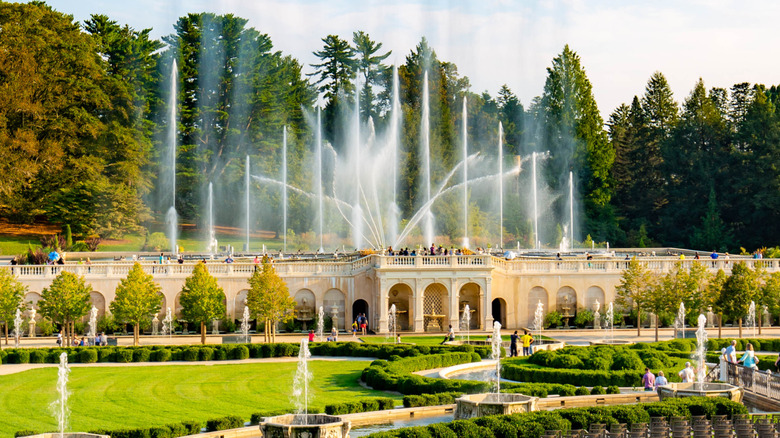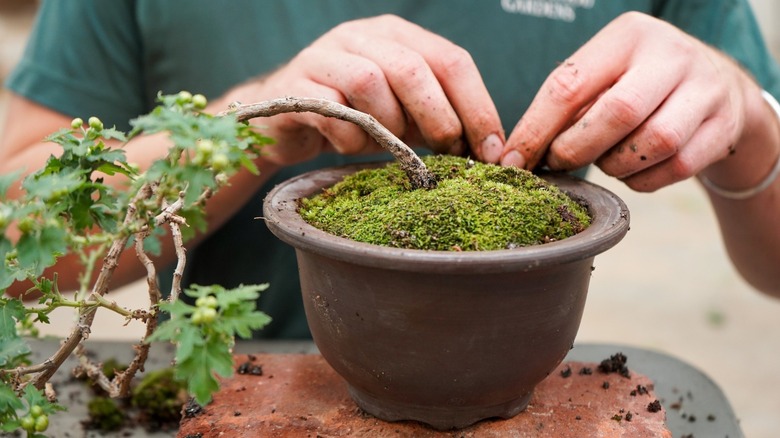America's Largest Botanical Garden Is A Prized Collection Of The World's Most Beautiful Plants
Putting all manner of plants on display for public viewing, botanical gardens are amazing places to wander while observing and learning about plants. There are more than 380 of these exhibitions in the American Horticultural Society directory alone, most of which are located in the eastern half of the United States. The largest one — and the best one in the United States as dubbed by USA Today — Longwood Gardens in Kennett Square, Pennsylvania, is prized for its collections.
Longwood Gardens started with the purchase of a small farm in 1906 by industrialist Pierre S. du Pont, who wanted to save the historic trees — which his family started planting in 1798 as inspiration — from becoming lumber. Since then, that small farm has grown to stretch across more than 1,100 acres. It has beautifully designed gardens, magnificent conservatories, renowned fountains, and meadows and woodlands divided into six districts with panoramas of the Brandywine Valley.
However, you'll find more than just marigolds planted in the gardens. The living plant collection features more than 10,000 domestic and international species and varieties. For instance, some of the trees planted by the founder's family still stand in Peirce's Park in the House & Theater District. Also, Mr. du Pont started building collections with his favorite international plants, providing a template for the collections that visitors observe today. Of the thousands of plants on display, the staff grows about 70% of them (more than 100,000).
Science and education at Longwood Gardens
Botanical gardens are often managed for conservation and scientific research purposes, and Longwood is no different. With over 50 people on its scientific team, Longwood Gardens is dedicated to advancing the understanding of the natural world. The researchers work in key areas — conservation, cultivation, stewardship and ecology, and soils and composting — which include cutting-edge, in-house facilities and regional and global fieldwork.
The research team's efforts in conservation horticulture have involved exploration, propagation, and prioritized studies to save endangered plant species and ecological systems. They even rigorously review new seed or plant specimens before adding them to the gardens, and they combine ecology, native horticulture, and stewardship to protect all of the lands within Longwood. As part of their responsible sustainability efforts, the scientists have put comprehensive recycling and composting processes in place to reduce the waste that their facilities send to landfills significantly.
On top of that, the staff at Longwood is more than eager to teach others about all of these aspects. Family, youth, teacher, and student programs are available to educate eager learners about everything, such as types of soil and their uses, the type of plants that are best for science projects, and the value of safeguarding the natural environment. Longwood Gardens even offers college internships and fellowships, professional programs, and continuing education. Plus, online learning allows people to learn from home. In other words, it's much more than just a place to look at flowers.

